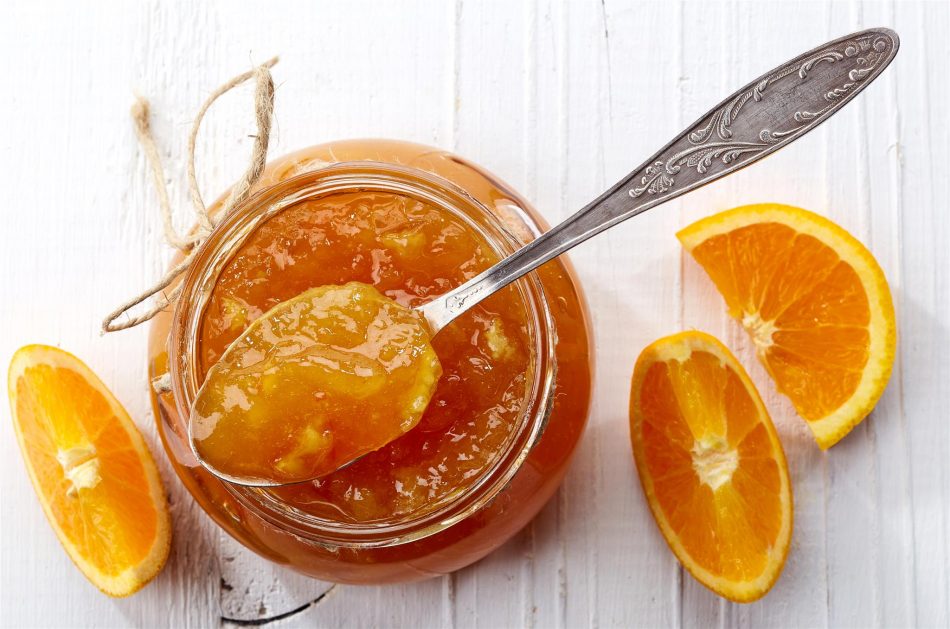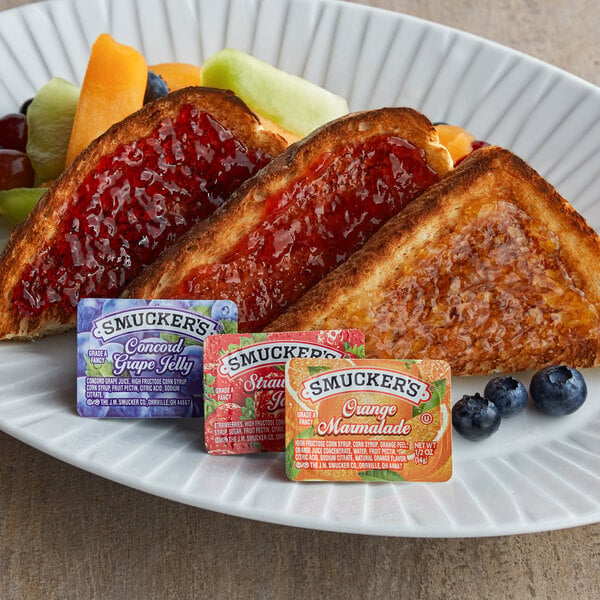Jam Vs Jelly Vs Preserves Vs Marmalade / The Difference Between Jelly Jam And Marmalade - Options include jellies, jams, preserves, conserves, marmalades, fruit butters, fruit honeys, and fruit syrups.
Jam Vs Jelly Vs Preserves Vs Marmalade / The Difference Between Jelly Jam And Marmalade - Options include jellies, jams, preserves, conserves, marmalades, fruit butters, fruit honeys, and fruit syrups.. It can be produced from kumquats, lemons, limes, grapefruits, mandarins, sweet oranges, bergamots, and other citrus fruits, or any combination of them. You can make jam by cutting up whole fruit, adding sugar and pectin, and cooking the mixture down to a gel. Jelly has the smoothest consistency and is usually clear. Known for having a fruit juice base, jam is mostly clear with a mixture of pureed or crushed fruit. We love how aromatic and bittersweet good marmalades are, a result of all the complex flavors and fragrant oils present in those citrus peels.
We love how aromatic and bittersweet good marmalades are, a result of all the complex flavors and fragrant oils present in those citrus peels. Jelly is made from sugar, pectin, acid, and fruit juice and is a clear spread that is firm enough to hold its shape. The main difference between jam and jelly is that jelly is cooked with fruit juice instead of real fruit. Each product is made using a different form of the fruit. This makes jam less stiff than jelly.

Known for having a fruit juice base, jam is mostly clear with a mixture of pureed or crushed fruit.
This makes jam less stiff than jelly. It can be produced from kumquats, lemons, limes, grapefruits, mandarins, sweet oranges, bergamots, and other citrus fruits, or any combination of them. History of jam vs preserves. In the final product, small pieces of citrus rind are suspended in a transparent jelly. Unlike jams and jellies, preserves are chunky in texture. Each product is made using a different form of the fruit. Preserves are basically the same as jam unless you buy them from smucker's, in which case if it's got seeds in it, it's preserves, and if it doesn't, it's jam. By the late middle ages, jams and fruit conserves were popular there. Fruit preserves are made from fruit juice, pulp, skin and seeds, sweetener and pectin (a natural gelling agent), and have lots of body and texture. Jam and marmalade are made in very similar ways and used in very similar applications. Preserves contain whole fruit or small pieces of fruit in a thick sugar syrup. Jam, jelly, preserves, and marmalade all live life in. A variety of fruit can be used, from grape to blackberry to strawberry, but it is not typically made with citrus fruit.
In the final product, small pieces of citrus rind are suspended in a transparent jelly. You can make jam by cutting up whole fruit, adding sugar and pectin, and cooking the mixture down to a gel. Known for having a fruit juice base, jam is mostly clear with a mixture of pureed or crushed fruit. Jam, jelly, preserves, and marmalade all live life in. Marmalade is a jelly with pieces of fruit suspended in it.

Thus, you can use them interchangeably.
Jellies can also be made from ingredients other than fruit, such as herbs, tea, wine, liqueurs, flowers, and vegetables. In preserves, the fruit comes in the form of chunks in a gel or syrup. Take some delicious fruit, add lots of sugar, and cook it down until it becomes nearly solid, then spread it on a piece of bread, a muffin, a burger, or some slices of cured meat (a bit too fancy for our taste). Sometimes the fruits are cooked and then used to extract the juice via a jelly bag that ensures no slippage of any fruit pieces. In jam, the fruit comes in the form of fruit pulp or crushed fruit. Jam has natural fruit juice added during the cooking process, giving the gelled final product an almost opaque appearance. Marmalade generally refers to a fruit preserve made from the juice and peel of citrus fruits boiled with sugar and water. Marmalade is made by adding tiny pieces of. Jelly is made from sugar, pectin, acid, and fruit juice and is a clear spread that is firm enough to hold its shape. Jelly holds it shape but is tender enough to quiver, and should spread relatively easily. Marmalade is a type of preserve with citrus fruits in it. Oh, and sugar also makes preserves deliciously sweet. It can be produced from kumquats, lemons, limes, grapefruits, mandarins, sweet oranges, bergamots, and other citrus fruits, or any combination of them.
The term marmalade is usually applied to citrus preserves (like oranges Jam is made from whole or cut up pieces of fruit with sugar. Ok, maybe we're stretching the metaphor a bit, but if fruit is the star and sugar's the backup singer, let's call pectin the autotune of your jam or jelly. Jellies can also be made from ingredients other than fruit, such as herbs, tea, wine, liqueurs, flowers, and vegetables. The difference between jams, jellies, marmalade & fruit butter.

Preserves will have more fruit in them than jam will.
Jelly holds it shape but is tender enough to quiver, and should spread relatively easily. By the late middle ages, jams and fruit conserves were popular there. Jelly has the smoothest consistency and is made by crushing a fruit and discarding the solid chunky leftovers. Marmalade is made by adding tiny pieces of. Preserves are basically the same as jam unless you buy them from smucker's, in which case if it's got seeds in it, it's preserves, and if it doesn't, it's jam. According to many chefs, the mixture to make the perfect jam is typically 45 percent fruit and 55 percent sugar. Take some delicious fruit, add lots of sugar, and cook it down until it becomes nearly solid, then spread it on a piece of bread, a muffin, a burger, or some slices of cured meat (a bit too fancy for our taste). Jellies can also be made from ingredients other than fruit, such as herbs, tea, wine, liqueurs, flowers, and vegetables. Known for having a fruit juice base, jam is mostly clear with a mixture of pureed or crushed fruit. The term marmalade is usually applied to citrus preserves (like oranges Fruit preserves are made from fruit juice, pulp, skin and seeds, sweetener and pectin (a natural gelling agent), and have lots of body and texture. Jam has natural fruit juice added during the cooking process, giving the gelled final product an almost opaque appearance. Jelly is made from only the fruit juice and sugar.
Komentar
Posting Komentar